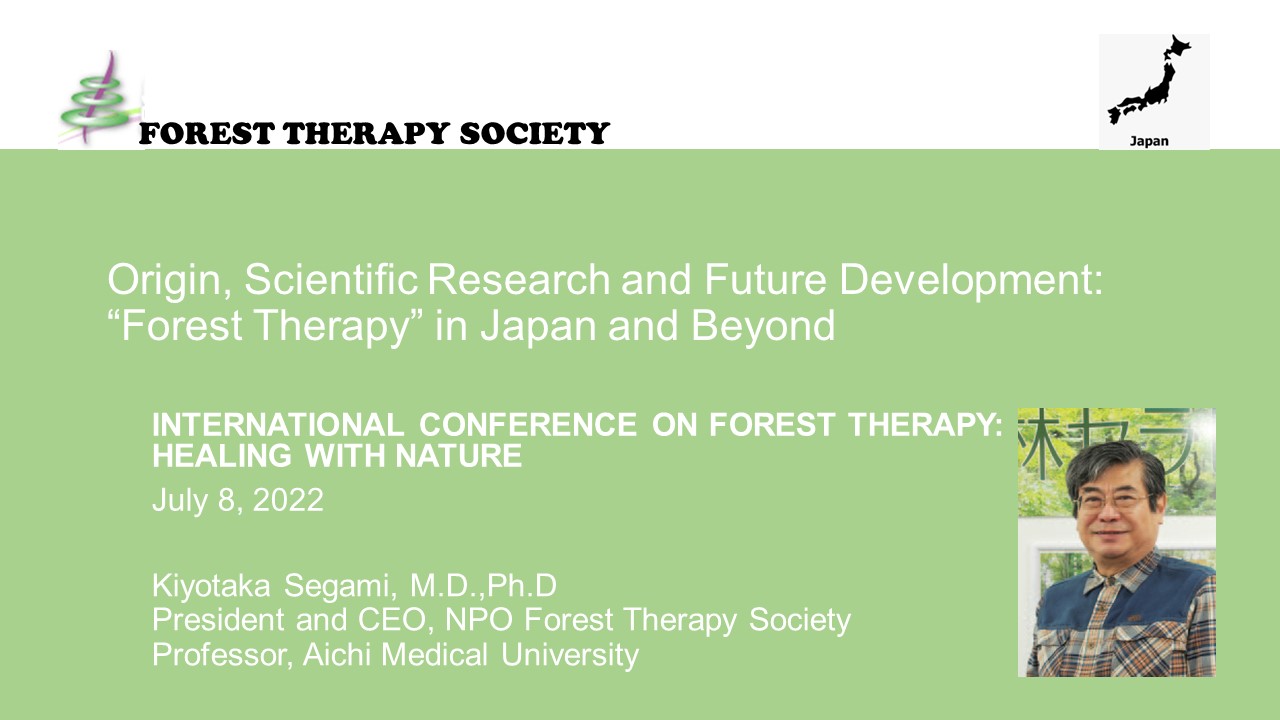Forest therapy is a practical activity that contributes to the improvement of human health, and as a field
related to medical treatment, it must be based on scientific evidence and those involved in forest therapy
must act in a highly ethical manner.
Forest therapy is a practice that requires practitioners, those who guide and support them, and those who
provide the venue. For the practitioner, forest therapy should be safe, health-care friendly, and promote
good health. Those involved in teaching or supporting the practice are required to directly confirm that the
methods used by practitioners are scientifically proven to be safe for health and to promote health, and not
simply because they are empirically good. In addition, the safety of the method and the place where it is
practiced must always be confirmed. In doing so, safety must be ensured, including confirmation by a third
party. Providers of forest therapy sites must always check the safety of the trails and surroundings where
forest therapy is practiced, and must not fail to manage them to ensure safety. They must also constantly
provide users with point and line information regarding the safety and safety hazards of the place where
forest therapy is practiced.
The future development of forest therapy practice depends, first, on the ability to provide
evidence-supported practice to those who practice forest therapy and, second, on the ability of research and
practice-support organizations to recommend appropriate research findings to practitioners. The first is to
increase the number of researchers.
It is not about increasing the number of researchers, but about improving the quality of research.
Many research papers on forest therapy are being written. We must not allow the results of each of these
studies to be taken for granted by users and enthusiasts of forest therapy who are not scientists. It is
important to examine the appropriateness of the content of individual papers for those who practice forest
therapy in the belief that it contributes to health. In this sense, the review should be conducted based on
the same approach as that of Evidence Based Medicine (EBM) in the world of clinical medicine, which was
proposed by Dr. Guyatt of McMaster University in 1991 and has become common practice today. The focus must
also be on whether or not the treatments and health promotion methods can be responsibly and strongly
recommended to the users based on the evidennce so identified. Today, GRADE, a system for evaluating and
recommending research results in clinical research, has been developed to further develop on the basis of
this EBM. This system was developed jointly by clinical researchers from around the world in order to be
able to recommend the best treatment options to patients based on the results of medical care research. For
the development of forest therapy, I do not think it is yet possible to reach the level of GRADE, but I
recommend that the concept of its development be incorporated.
In the practice of EBM, there is the Cochrane Library, a system for evaluating research results. The
Cochrane Library has criteria according to the level of evidence used as a global standard. In our training
sessions, we use these criteria to evaluate research results and actively inform users of research results
that should be recommended to them in accordance with the basic concept of GRADE.
In the Cochrane System, the certainty of evidence is carefully considered from the perspective of risk of
bias in study design, imprecision of study results, inconsistency, indirectness, and publication bias.
The Criteria rank the certainty of Evidence in the following order
I. Systematic Review/Meta-Analysis, II. one or more randomized controlled trials, III. non-randomized
controlled trial, IV. analytical epidemiologic studies (cohort and case-control studies), V. Descriptive
studies (case reports and case series), VI. Opinions of expert committees or VI. Opinions of expert
committees or individual experts.
In order to show what kind of studies have been conducted, we introduce the results of studies at levels I
through IV, but in making recommendations to users, we try as much as possible to include studies up to
level I or II.
GRADE stands for Grading of Recommendations, Assessment, Development and Evaluations, and has been adopted
by the BMJ as a transparent and systematic framework for preparing and presenting summaries of evidence.
GRADE requires that 1) evidence from randomized controlled trials be rated as high quality, and 2) evidence
that includes observational data be rated as low quality because of residual confounding, and that the
certainty or quality of the evidence and its recommendations be evaluated. is required.
This should also apply mutatis mutandis to those who conduct forest therapy research. In recommending
research results to users, the level of certainty of the evidence must be high.
As an example, we would like to introduce the following paper published in March 2022.
Evidence level I: What Activities in Forests Are Beneficial for Human Health?
Although the results of the studies conducted did not adequately answer the question posed in the title of
the paper, this study is of great significance because it clearly states the Limitation of the cited RCTs
and shows how forest-based interventions can be designed in the future In designing RCT studies, it is
important to consider the following questions It clearly shows that we need to pay more attention to the
"risk of bias" described in the Cochrane Handbook.
We too have analyzed and categorized numerous forest therapy-related studies. Through these reviews, we can
indicate to researchers areas of research activity that are either inadequate or in need of higher quality
research. We can also advocate to forest therapy practitioners and leaders for more appropriate forest
therapy practices. Such support activities are needed from our Forest Therpy Society🄬 and organizations
that are engaged in similar activities.
